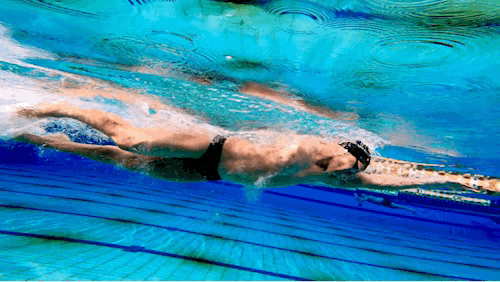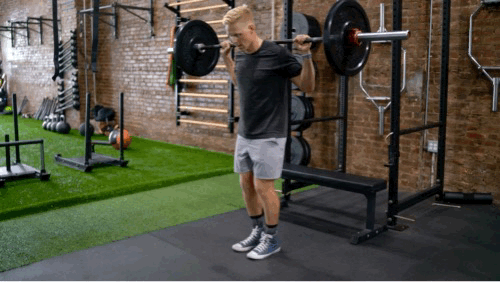5 Reasons Every Swimmer Should Lift Weights
/You might wonder how to blend in strength workouts when considering your swim training plan. Should you swim before or after lifting weights? Does swimming count as strength training, or should swimmers lift weights at all? Let’s dive into the undeniable benefits that lifting weights can offer swimmers.
Injury Prevention
Swimming and lifting weights can create a protective buffer for your body. Why? Because swimming alone, despite its fluid and low-impact nature, still involves repetitive movements that may lead to imbalances. For example, overdeveloped muscles from the same strokes may cause tightness or leave supporting muscles weak, making joints more vulnerable to injury.
Strength training isn’t just about bulking up; it’s about balancing muscular strength to support those repetitive motions, and improve your ability to produce force in the water. A well-rounded plan for lifting weights and swimming incorporates opposing joint actions and ensures movement through multiple planes. Exercises like squats, deadlifts, and kettlebell swings promote injury prevention, enhancing muscle balance so that swimmers stay strong and supple.
Injury Prevention exercises
Whether you choose to swim before or after weights, the end goal remains the same: build a resilient, well-balanced body that can handle the rigors of competitive swimming.
Improved Mobility
Swimming vs. weightlifting may seem like a clash of opposites, but both can complement each other, particularly when it comes to mobility. Weight training, when executed correctly, can actually enhance your range of motion. Think of competitive lifters - they often have excellent mobility, using strength through full ranges of motion.
The common myth that lifting weights makes you stiff is just that: a myth. By focusing on mobility exercises like kettlebell presses or deep squats, swimmers can improve joint function. Mobility work integrated with weight training can stretch and mobilize tight areas while stabilizing hypermobile joints. This is particularly relevant for swimmers who may be prone to overextending or hypermobile shoulders. So, if you’re pondering whether to swim before or after lifting weights, know that both can offer unique advantages to your mobility.
A kettlebell program for swimmers is a fantastic way to address this. Such a program allows athletes to perform movements that build both stability and flexibility, optimizing mobility for better swim technique.
Efficiency
Weights for swimming aren't just about raw power. Lifting weights can make your movements in the water more efficient. How? By training your muscles to function optimally, whether it’s for maintaining posture, streamlining your stroke, or kicking powerfully off the wall.
Tight, stiff muscles are like having your foot on the brake—your body has to work harder to achieve the same movement. On the other hand, muscles that are too loose lack the tone needed to generate power. Striking a balance, strength training creates muscles that are both strong and efficient, helping you swim with greater ease and for longer durations.
Consider this: swimming and weightlifting work hand-in-hand to maximize your potential. Building strength enhances your economy of movement, allowing you to glide through the water more fluidly and maintain your strokes with less energy.
Enhanced Endurance
Endurance is a key component of competitive swimming. But, have you ever wondered why swimmers lift weights? The answer lies in muscle fiber recruitment. Aerobic training mainly engages type one slow-twitch fibers, while strength training activates type two fast-twitch fibers.
By incorporating weightlifting and swimming, you’re not only developing your aerobic capacity but also improving anaerobic power. This makes it possible to swim faster and more explosively, even during longer sets. For instance, a swimmer who can knock out 10-20 pull-ups in dryland training will likely experience lower stroke counts at higher speeds in the pool.
Weights for swimming help you recruit more muscle fibers, translating to more effective propulsion and endurance. As a result, your swims become more powerful and sustained, a crucial factor when competing in longer distances.
Greater Speed and Power
Ultimately, if you’re serious about getting faster in the pool, strength training is non-negotiable. Swimming vs. lifting weights is not an either-or scenario; combining both can propel you to new heights. Once your stroke technique is refined and your tempo optimized, the only way to increase speed is by boosting force production. This is where lifting weights becomes essential.
Overloading the muscle groups used in swimming builds explosive strength, enhancing every aspect of your stroke. When you use resistance in the water, or perform explosive moves like kettlebell snatches on land, your body adapts to produce more force. This power translates to quicker sprints, stronger kicks, and faster breakouts.
If you’re debating whether it’s better to swim before or after lifting weights, think about your goals. Swimming after lifting is a complimentary stimulus after swimming, developing muscular balance and fast twitch muscles fibers, both of which oppose the slow twitch development in the water and repetitive joint actions, while swimming first can strategically prime your nervous system for increased power in the water. Though it may typically create short-term fatigue, with long-term gains in strength and power. Lifting and Swimming—A Perfect Pair
The question, “Should I swim or lift weights first?” depends on your training focus for the day. But one thing is clear: strength training is crucial for swimmers. By combining swimming and weightlifting, you’re preparing your body for maximum efficiency, endurance, and speed in the pool.
Incorporating lifting weights and swimming into your routine, whether separately or on the same day, can offer massive benefits. Remember, a well-designed strength program isn’t just an add-on; it’s a game-changer for performance. So, lift those weights, dive into the water, and watch your swimming improve like never before.
Ready to take your swimming performance to the next level? Explore Coach Dan Daly’s expertly crafted Dryland and Swim Programs. Build strength, improve mobility, and swim stronger than ever.






